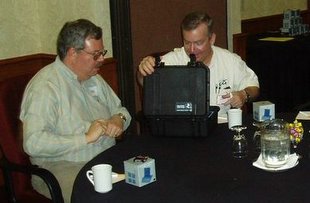What exactly is a brand?
There was an interesting discussion of the question "What Exactly is a Brand?" over on the Tom Peters blog and other blogs it referenced (should we call that "blog chaining"?). It is a great question and one that entrepreneurs especially need to consider.
Is your primary product your brand? Is your overall business the brand? Are you the brand (ala Tom Peters)? Is your personalized view of your industry your brand? Is your tactics and style your brand? And, some of us seem to specialize in being an invisible brand.
Your brand is not simply a name or logo or "trade dress" or slogan or product category, but it's the essense of how your customer audience see you and what you mean to them. It's the combination of your brand symbol (the stuff that they can see and sense about you) and your brand meaning (how they feel about you and the role they expect you to perform in their own "world").
-- Jack Krupansky




